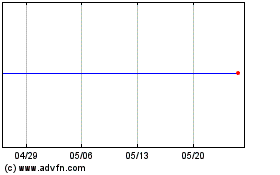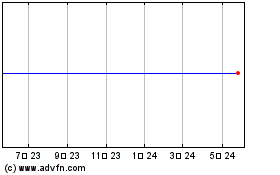FORM 6-K
SECURITIES
AND EXCHANGE COMMISSION
Washington,
D.C. 20549
Report
of Foreign Issuer
Pursuant
to Rule 13a-16 or 15d-16 of
the
Securities Exchange Act of 1934
For the
month of September 2022
Commission
File Number: 001-11960
AstraZeneca PLC
1
Francis Crick Avenue
Cambridge
Biomedical Campus
Cambridge
CB2 0AA
United
Kingdom
Indicate
by check mark whether the registrant files or will file annual
reports under cover of Form 20-F or Form 40-F.
Form
20-F X Form 40-F __
Indicate
by check mark if the registrant is submitting the Form 6-K in paper
as permitted by Regulation S-T Rule 101(b)(1):
Indicate
by check mark if the registrant is submitting the Form 6-K in paper
as permitted by Regulation S-T Rule 101(b)(7): ______
Indicate
by check mark whether the registrant by furnishing the information
contained in this Form is also thereby furnishing the information
to the Commission pursuant to Rule 12g3-2(b) under the Securities
Exchange Act of 1934.
Yes __
No X
If
“Yes” is marked, indicate below the file number
assigned to the Registrant in connection with Rule 12g3-2(b):
82-_____________
AstraZeneca PLC
INDEX
TO EXHIBITS
1.
Forxiga approved in China for CKD
5 September 2022 07:05 BST
Forxiga approved
in China for the treatment of chronic
kidney disease in patients at risk of progression with and without
type-2 diabetes
Approval marks the first SGLT2 inhibitor approved in China for
chronic kidney disease in adult patients with and without type-2
diabetes
AstraZeneca's Forxiga (dapagliflozin), a sodium-glucose
cotransporter 2 (SGLT2) inhibitor, has been approved in China to
reduce the risk of sustained estimated glomerular filtration rate
(eGFR) decline, end-stage kidney disease (ESKD), cardiovascular
(CV) death and hospitalisation for heart failure (hHF) in adults
with chronic kidney disease (CKD) at risk of progression with and
without type-2 diabetes (T2D).
The approval by China's National Medical Products Administration
(NMPA) is based on positive results from the DAPA-CKD Phase III
trial1.
CKD is a serious, progressive condition defined by decreased kidney
function and is often associated with an increased risk of heart
disease or stroke2-4.
The condition affects 850 million people
worldwide5.
However, diagnosis rates remain low and up to 90% of patients are
unaware they have the disease4.
Member of the DAPA-CKD Executive Committee, Fan Fan Hou, Southern
Medical University, Guangzhou, China, said: "With unprecedented
results of DAPA-CKD, dapagliflozin becomes the first SGLT2
inhibitor approved in China for the treatment of chronic kidney
disease. This transformational milestone brings great hope to the
120 million subjects suffering from chronic kidney disease in
China."
Sir Mene Pangalos, Executive Vice President, BioPharmaceuticals
R&D, AstraZeneca said: "In addition to AstraZeneca's commitment
to drive increased awareness, prevention and earlier diagnoses,
this approval marks another important step forward in our
ambition to stop, reverse and ultimately cure chronic kidney
disease globally. We are thrilled at the opportunity to
bring Forxiga to millions of patients across the country
and improve patient outcomes."
The DAPA-CKD Phase III trial demonstrated
that Forxiga, on top of standard-of-care (SoC) treatment with
an angiotensin-converting enzyme inhibitor or an angiotensin
receptor blocker, reduced the relative risk of worsening of renal
function, onset of ESKD, or risk of CV or renal death by 39%, the
primary composite endpoint, compared to placebo (absolute risk
reduction [ARR]=5.3%, p<0.0001) in patients with CKD Stages 2-4
and elevated urinary albumin excretion. Forxiga also significantly reduced the relative risk
of death from any cause by 31% (ARR=2.1%, p=0.0035) compared to
placebo6.
The safety and tolerability of Forxiga were consistent with the well-established
safety profile of the medicine.
Forxiga (known
as Farxiga in the US) is now approved in 100 countries
around the world including the US, the European
Union and Japan for
the treatment of CKD in adults with and without
T2D.
Notes
CKD
CKD is a serious, progressive condition defined by decreased kidney
function (shown by reduced estimated glomerular filtration rate
(eGFR) or markers of kidney damage, or both, for at least three
months)4. The
most common causes of CKD are diabetes, hypertension and
glomerulonephritis.7 CKD
is associated with significant patient morbidity and an increased
risk of CV events, such as heart failure (HF) and
premature death2.
In its most severe form, known as ESKD, kidney damage and
deterioration of kidney function have progressed to the point where
dialysis or kidney transplantation are required2. The
majority of patients with CKD will die from CV causes before
reaching ESKD8. Currently
in China, up to 120 million people are living with
CKD9.
DAPA-CKD
DAPA-CKD was an international, multi-centre, randomised,
double-blinded Phase III trial in 4,304 patients designed to
evaluate the efficacy of Forxiga 10mg, compared with placebo, in patients
with CKD Stage 2-4 and elevated urinary albumin excretion, with and
without T2D. Forxiga was given once daily in addition to SoC. The
primary composite endpoint was worsening of renal function or risk
of death (defined as a composite of an eGFR decline ≥50%,
onset of ESKD or death from CV or renal cause). The secondary
endpoints included the time to first occurrence of the renal
composite (sustained ≥50% eGFR decline, ESKD or renal death),
the composite of CV death or hospitalisation for HF (hHF), and
death from any cause. The trial was conducted in 21
countries1. Detailed
results from the trial were published in The
New England Journal of Medicine1.
Forxiga
Forxiga (dapagliflozin)
is a first-in-class, oral, once-daily SGLT2 inhibitor. Research has
shown Forxiga's efficacy
in preventing and delaying cardiorenal disease, while also
protecting the organs - important findings given the underlying
links between the heart, kidneys and pancreas1,10,11.
Damage to one of these organs can cause the other organs to fail,
contributing to leading causes of death worldwide, including T2D,
HF and CKD12-15.
Forxiga is
approved as an adjunct to diet and exercise to improve glycaemic
control in adults with T2D and in T2D to reduce the risk of hHF or
CV death when added to SoC based on the findings of
the DECLARE-TIMI
58 Phase
III CV outcomes trial11. Forxiga is
also approved for the treatment
of HFrEF and
the treatment
of CKD based
on the findings of the DAPA-HF and DAPA-CKD Phase
III trials6,10.
DapaCare is a robust programme of clinical trials to evaluate the
potential CV, renal and organ protection benefits
of Forxiga. It includes more than 35 completed and ongoing
Phase IIb/III trials in more than 35,000 patients, as well as more
than 2.5 million patient-years'
experience. Forxiga is
currently being tested in patients without T2D following an acute
myocardial infarction (MI) or heart attack in the DAPA-MI Phase III
trial - a first of its kind, indication-seeking registry-based
randomised controlled trial16.
AstraZeneca in CVRM
Cardiovascular, Renal and Metabolism (CVRM), part of
BioPharmaceuticals, forms one of AstraZeneca's main disease areas
and is a key growth driver for the Company. By following the
science to understand more clearly the underlying links between the
heart, kidneys and pancreas, AstraZeneca is investing in a
portfolio of medicines for organ protection and improving outcomes
by slowing disease progression, reducing risks and tackling
co-morbidities. The Company's ambition is to modify or halt the
natural course of CVRM diseases and potentially regenerate organs
and restore function, by continuing to deliver transformative
science that improves treatment practices and CV health for
millions of patients worldwide.
AstraZeneca
AstraZeneca (LSE/STO/Nasdaq: AZN) is a global, science-led
biopharmaceutical company that focuses on the discovery,
development, and commercialisation of prescription medicines in
Oncology, Rare Diseases, and BioPharmaceuticals, including
Cardiovascular, Renal & Metabolism, and Respiratory &
Immunology. Based in Cambridge, UK, AstraZeneca operates in over
100 countries and its innovative medicines are used by millions of
patients worldwide. Please visit astrazeneca.com and
follow the Company on Twitter
@AstraZeneca.
References
1.
Heerspink HJL, et al. Dapagliflozin in patients
with chronic kidney disease. N Engl J
Med.
2020;383(15):1436-1446.
2.
Centers
for Disease Control and Prevention (CDC) [Internet]. Chronic kidney
disease in the United States; 2019 [cited 2021 Jul 08]. Available
from:
https://www.cdc.gov/kidneydisease/publications-resources/2019-national-facts.html.
3.
Segall L, et al. Heart failure in patients with
chronic kidney disease: a systematic integrative
review. Biomed Res
Int. 2014;2014:937398.
4.
Bikbov B, et al. Global, regional, and national
burden of chronic kidney disease, 1990-2017: a systematic analysis
for the Global Burden of Disease Study 2017. Lancet. 2020;395(10225):709-733.
5.
Jager KJ, et al. A single number for advocacy and
communication-worldwide more than 850 million individuals have
kidney diseases. Nephrol Dial
Transplant. 2019;34(11):1803-1805.
6.
Heerspink
H. DAPA-CKD - Dapagliflozin in Patients with Chronic Kidney
Disease. presented at: ESC Congress 2020 - The Digital Experience,
2020 August 29 - September 01.
7.
National Kidney Foundation
[Internet]. Kidney Disease: Causes; 2015 [cited 2022 Jun 09].
Available from: https://www.kidney.org/atoz/content/kidneydiscauses.
8.
Briasoulis A, et al. Chronic kidney disease as a
coronary artery disease risk equivalent. Curr Cardiol
Rep.
2013;15(3):340.
9.
Zhang L, et al.
Lancet. 2012
Mar 3;379(9818)815-22.
10.
McMurray JJV, et al. Dapagliflozin in patients
with heart failure and reduced ejection
fraction. N Engl J
Med 2019;
381(21):1995-2008.
11.
Wiviott SD, et al. for the DECLARE-TIMI 58
Investigators. Dapagliflozin and cardiovascular outcomes in type-2
diabetes [article and supplementary
appendix]. N Engl J
Med 2019;
380(4):347-57.
12.
Vos T, et al. Global, regional, and national
incidence, prevalence, and years lived with disability for 328
diseases and injuries for 195 countries, 1990-2016: A systematic
analysis for the Global Burden of Disease Study
2016. Lancet 2017;
390(10100):1211-59.
13.
Mayo Clinic [Internet]. Heart
failure, 2020; [cited 2022 Jun 09]. Available
from: https://www.mayoclinic.org/diseases-conditions/heart-failure/symptoms-causes/syc-20373142.
14.
Centers for Disease Control and
Prevention (CDC) [Internet]. A snapshot: Diabetes in the United
States, 2020; [cited 2022 Jun 09]. Available
from: https://www.cdc.gov/diabetes/library/socialmedia/infographics/diabetes.html.
15.
National Institute of Diabetes
and Digestive and Kidney Diseases (NIDDK) [Internet]. Heart disease
& kidney disease, 2016; [cited 2022 Jun 09]. Available
from: https://www.niddk.nih.gov/health-information/kidney-disease/heart-disease.
16.
Clinicaltrials.gov [Internet].
Dapagliflozin Effects on Cardiovascular Events in Patients With an
Acute Heart Attack (DAPA-MI); [cited 2022 Jun 09]. Available
from: https://clinicaltrials.gov/ct2/show/NCT04564742.
Adrian Kemp
Company Secretary
AstraZeneca PLC
SIGNATURES
Pursuant
to the requirements of the Securities Exchange Act of 1934, the
Registrant has duly caused this report to be signed on its behalf
by the undersigned, thereunto duly authorized.
Date: 5
September 2022
|
|
By: /s/
Adrian Kemp
|
|
|
Name:
Adrian Kemp
|
|
|
Title:
Company Secretary
|
AstraZeneca (NYSE:AZN)
過去 株価チャート
から 1 2025 まで 2 2025

AstraZeneca (NYSE:AZN)
過去 株価チャート
から 2 2024 まで 2 2025
